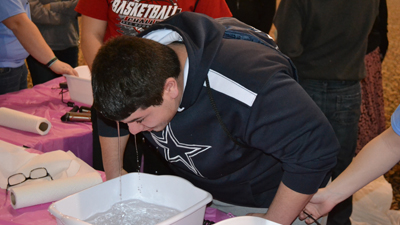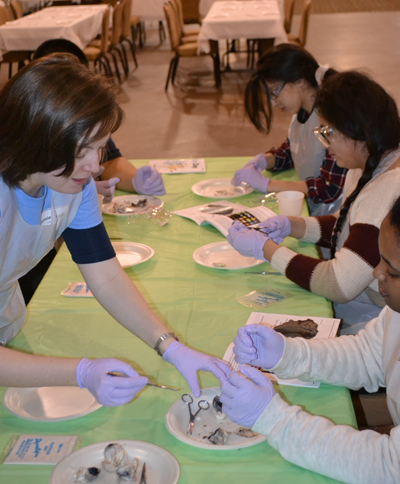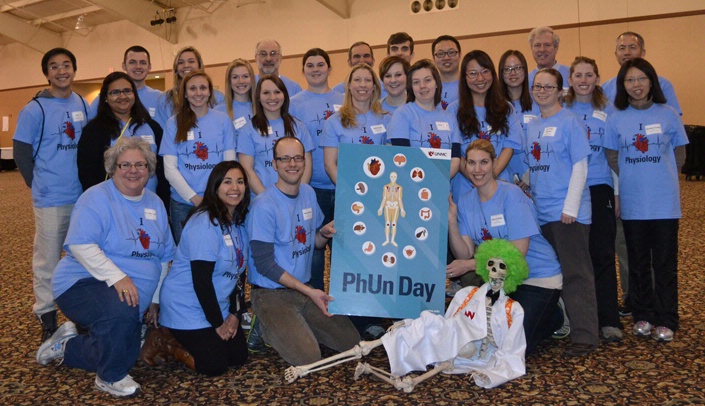 |
A student puts his face in a bucket of water to record the change in his heart rate. |
The day was an outreach event organized by the UNMC Science Education Partnership Award (SEPA) program, an NIH-funded initiative to engage Native youth in science. The purpose of the grant is to strengthen the math and science curriculum of American Indian youths living on reservations and in urban areas in Nebraska and South Dakota.
“Engaging Native American youth in science activities is a critical first step to increase the numbers of Native American health professionals in the future,” said Maurice Godfrey, Ph.D., principal investigator on the SEPA grant.
 |
Volunteer Jamie Arnst, Ph.D., helps students with a dissection activity. |
“The students were excited and engaged throughout the day as they participated in the various stations demonstrating physiological systems,” Becker said. “Our excellent group of volunteers motivated students to interact with the scientific method by asking questions, making predictions, and conducting experiments.”
Activities were led by UNMC graduate students, faculty, and alumni. The students also took the opportunity to discuss scientific and medical careers with the middle and high school students as they learned more about physiology and health.
The event featured a booth in which students could put their face in a bucket of water while recording their heart rate, dissect owl pellets, check blood pressure and other activities.
“The weeks of intense preparation as SEPA staff is well worth the priceless smiles of students doing science-related activities,” said Liliana Bronner, SEPA program coordinator.
The organizers also put together a pamphlet that can be used to re-create the outreach event in the future.
Schiller said it was important to expose the students, drawn from schools on Native American reservations, to science careers.
“It’s important to get the message across that science and medicine aren’t necessarily the same career path,” she said. “Most kids, all they really know about science and medicine is that some student wants to be a pediatrician. And these students come from economically challenged areas, where a lot of these careers might seem unattainable – so for us, one of the joys is when they see that we’re ‘normal kids’ just like they are.”
For Becker, the best part of the day was seeing students get excited about physiology.
“Watching the natural curiosity of students come alive as they explore science is an incredibly rewarding experience,” he said.
